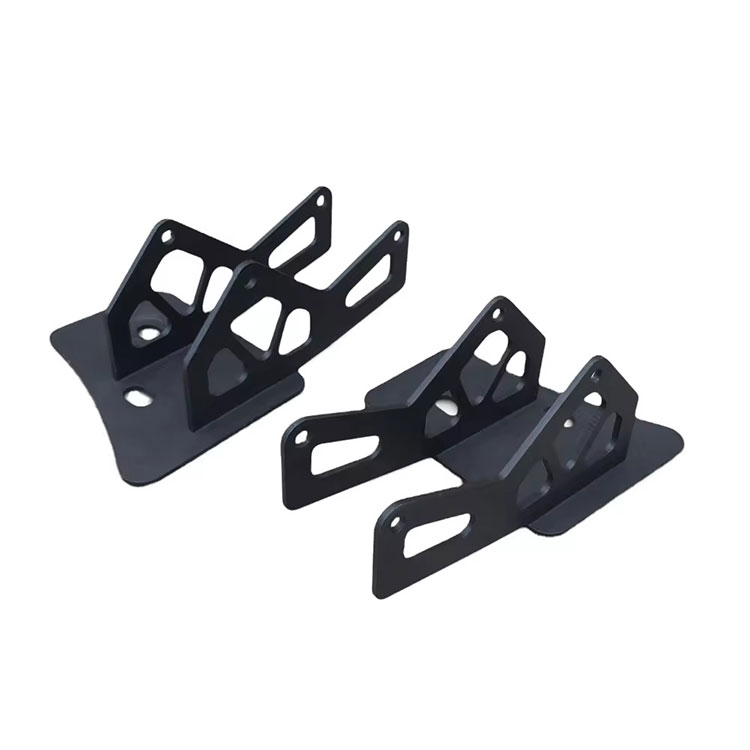Advantages of Metal Stamping
2024-06-06
The metal stamping process is a manufacturing technique used to shape flat metal sheets or coils into desired forms and configurations through the application of mechanical force. It is widely used in various industries to produce parts and components with high precision and efficiency. Here's an overview of the metal stamping process:
1. Design and Tooling Preparation
1. Product Design: The process begins with the design of the part or component to be stamped. Engineers create CAD (Computer-Aided Design) models and specify dimensions, tolerances, and material specifications.
2. Tooling Design: Tool and die designers create tooling, including dies, punches, and fixtures, based on the product design. These tools are used to cut, bend, and form the metal into the desired shape.
3. Die Construction: Once the tooling design is finalized, dies are manufactured using materials such as tool steel. Dies consist of two parts: the punch, which applies force to the metal, and the die, which provides the desired shape.
2. Material Selection and Preparation
1. Material Selection: The appropriate metal material is selected based on factors such as strength, ductility, and cost. Common materials used in metal stamping include steel, aluminum, copper, and stainless steel.
2. Material Preparation: Metal sheets or coils are prepared for stamping by cleaning, lubricating, and feeding them into the stamping press. Lubrication helps reduce friction and wear during the stamping process.
3. Stamping Process
1. Stamping Press Setup: The metal sheets or coils are fed into a stamping press, which consists of a bed, a ram, and a die set. The die set is mounted on the press and aligned with the feeding mechanism.
2. Blanking: In the blanking stage, the metal sheet is cut into a flat shape called a blank using a punch and die. This process removes excess material and creates the basic outline of the part.
3. Forming: Forming operations such as bending, drawing, and stretching are performed to shape the blank into the desired form. This is achieved by applying force from the punch to deform the metal against the die.
4. Coining: Coining is a precision forming operation used to create tight tolerances, flat surfaces, and intricate details on the part. It involves compressing the metal between the punch and die with high pressure.
5. Piercing: Piercing operations are used to create holes, slots, or other features in the part. A punch and die with the desired shape are used to remove material from the blank.
4. Post-Stamping Operations
1. Deburring: After stamping, the parts may undergo deburring to remove sharp edges and burrs created during the stamping process. This improves the appearance and safety of the parts.
2. Surface Treatment: Parts may undergo surface treatment processes such as plating, painting, or powder coating to improve corrosion resistance, appearance, and durability.
3. Quality Inspection: Parts are inspected for dimensional accuracy, surface finish, and other quality criteria to ensure they meet the specifications and standards.
Advantages of Metal Stamping
1. High Precision: Metal stamping allows for the production of parts with tight tolerances and complex shapes with high repeatability.
2. Cost-Effective: Metal stamping is a highly efficient manufacturing process, making it cost-effective for large production volumes.
3. Versatility: It can be used to produce a wide range of parts and components for various industries, from automotive and aerospace to electronics and appliances.
4. Material Savings: Metal stamping minimizes material waste by efficiently utilizing metal sheets or coils, reducing material costs.
5. Speed: Metal stamping can produce parts at high speeds, making it suitable for high-volume production requirements.
Conclusion
Metal stamping is a versatile and efficient manufacturing process used to produce a wide range of parts and components with high precision and repeatability. By following a series of carefully controlled steps, including tooling preparation, material selection, stamping operations, and post-stamping processes, manufacturers can produce high-quality metal parts that meet the specifications and requirements of various industries.



